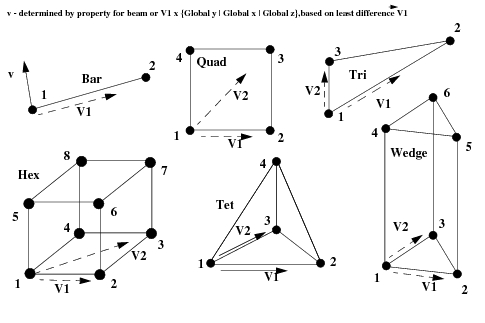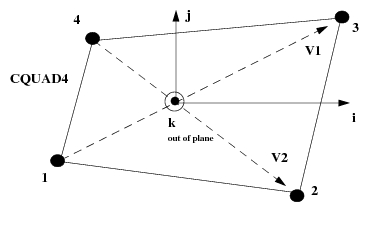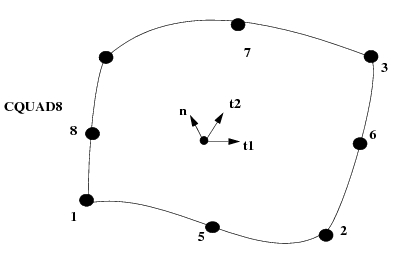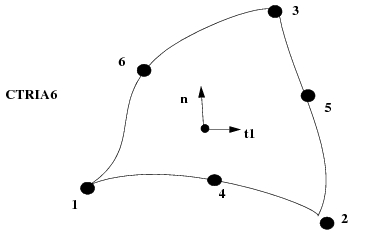XXXXXXXXXXXXXXXXXXXXXXXXXXXXXXXXXXXXXXXXXXXXXXXXXXXXXXXXXXXXXXXXXXXXXXXXXXXXXXXXXXXXXXXXXXXXXXXXXXXXXXXXXXXXXXXXXXXXXXXXXXXXXXXXXXXXXXXXXXXXXXXXXXXXXXXX''"> 13.6 Coordinate Systems
Results are stored in the Patran database in a variety of ways. They are also transformed, either automatically or by the user when necessary, to create meaningful plots. It is important to understand each of these coordinate systems and know in what coordinate system results are stored and whether any transformations are being performed prior to graphical display.
Vectors are transformed as:
where
v is a vector referenced in the local coordinate system defined by the rotation matrix [R], each row of which defines a unit vector in the global system.
U is a vector referenced in the global system. For example, if the global system is rotated

about the z axis, the rotation matrix of the new system is:
The inverse vector transformation is:
which transforms a vector result defined in the [R] system to the global system, since [R] is an orthonormal matrix by definition.
Similarly, the tensors are transformed as:
where
S is a tensor in the global system, and

is the tensor in the [R] system.
The inverse tensor transformation is:
which transforms a tensor

in [R] system to a tensor
S in the global system.
For nodal results, the coordinate system types are:
Global system | Type =0 | ID =0 |
Nodal system | =1 | =0 |
User system | =3 | =Assigned |
For element results, the coordinate system types are:
Global system | Type =0 | ID =0 |
Element system | =2 | =0 |
User system | =3 | =Assigned |
Material system | =4 | =0 |
Ply system | =5 | =0 |
Global System
This is the Patran global or default rectangular coordinate system. For MSC Nastran users, this is the same as the MSC Nastran basic coordinate system. Most alternate coordinate systems use the global system as a basis.
Local Systems
These are Patran local coordinate systems specifically created by the user within Patran. They can be either rectangular, cylindrical, or spherical. These are the same as MSC Nastran global coordinate systems in MSC Nastran terminology. Do not be confused by this terminology. Just remember that user defined systems in Patran are called local systems and user defined systems in MSC Nastran are called global systems. The default coordinate system in Patran is called the global system and the default system in MSC Nastran is called the basic system.
Reference Systems
These are local systems or the global system by which geometric definitions are defined. For instance the coordinates locations of a finite element node is defined by referring to a reference system, either local or global.
Analysis Systems
These are the local systems in which results at finite element nodes will be calculated by the analysis solver. Nodes can be defined in one system (the reference system) but results calculated in another (the analysis system). In general, when nodal results are imported into the Patran database, they will be stored in the analysis systems.
Unknown Systems
These are systems which are unknown to Patran and therefore must remain in these systems when postprocessing. No transformation are allowed.
Element Systems
These are coordinate systems local to each specific element. There are many types of element coordinate systems. Suffice it to say here, that when elemental based results calculated in an elemental system are imported into the Patran database, the coordinate systems in which they are stored vary from element to element. This makes meaningful graphical visualization of these results quite difficult. Many times a coordinate transformation is required to convert all results into a consistent coordinate system. Once this is done then operations such as nodal averaging and scalar results derivations (von Mises) can be performed correctly and meaningfully.
Projected Global System
This is one system used to convert and display element based shell and plate data stored in an element systems into a consistent, meaningful plot.
The projected global system is defined as follows: First, the normal to the shell surface is calculated. This varies for curved elements and is constant for flat elements. If the angle between the normal and the global x-axis is greater than 0.01 radians, the global x-axis is projected onto the shell surface as the local x-axis. If the angle is less than 0.01 radians, either the global y-axis or the z-axis (whichever makes the largest angle with the normal) is defined to be the local x-axis. The local y-axis is perpendicular to the plane defined by the normal and the local x-axis. The projected z-axis will align with the element normal.
For one dimensional (1D) and three dimensional (3D) elements, the projected global system is the global system and therefore no projection is performed.
This system has been set as the default for viewing fringe and other plots of element based vector and tensor components on two dimensional (2D) elements. It provides a system with real-world significance which is consistent from element to element.
Projected Systems
These are systems like the projected global system but instead project other coordinate systems other than the global onto the elements. An example is the shell p-elements of MSC Nastran which use a convective system which is a project of a coordinate system onto the element (plus an optional flip and rotation):
If projected axis is parallel to element normal, the axis of greatest projection is used.
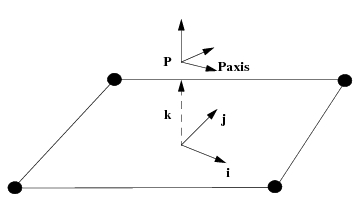
Figure 13‑4 Projected Coordinate System Definition.
Patran Element IJK
These are Patran defined element coordinate systems. Many analysis translators will convert results from code specific element coordinate systems to a consistent Patran element IJK coordinate system. These systems differ from element topology to element topology.The IJK system is defined as follows:
Figure 13‑5 Patran Element IJK Coordinate System Definitions.
Element Bisector (CQUAD4)
This element coordinate systems, supported by Patran, is specific to the MSC Nastran CQUAD4 element. Other element types default to the IJK system. The definition of the bisector system is as follows:
Figure 13‑6 CQUAD4 Bisector Coordinate System Definition.
Material Systems
These are element coordinate systems based on a material definition and angle. These exist for QUAD and TRI elements only. Material coordinate systems are defined as follows:
which is rotated around a degrees about k. a is from the material property record.
The k vector is the same as that for bisector (QUAD element) or IJK (TRI element).
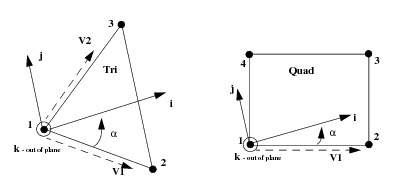
Figure 13‑7 Patran Element IJK Coordinate System Definitions.
MSC Nastran CQUAD8 System
This element coordinate systems, supported by Patran, is specific to the MSC Nastran CQUAD8 element. Other element types default to the IJK system. This coordinate system is position dependent. The definition of this system is as follows:
Use bisections:
So the element system is:
Figure 13‑8 MSC Nastran CQUAD8 Coordinate System Definition.
MSC Nastran CTRIA6 System
This element coordinate systems, supported by Patran, is specific to the MSC Nastran CTRIA6 element. Other element types default to the IJK system. This coordinate system is position dependent. The definition of this system is as follows:
So the element system is:
Figure 13‑9 MSC Nastran CTRIA6 Coordinate System Definition.


